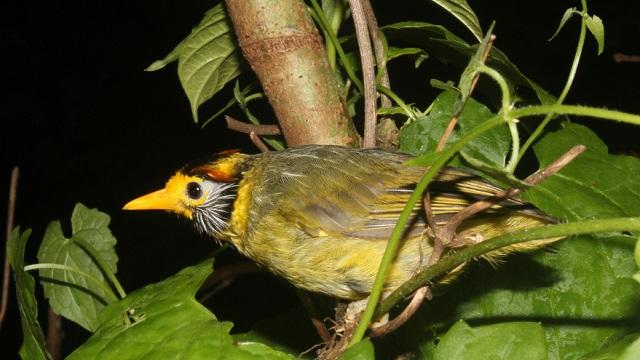Illegal logging, hunting diminish Negros Island bird species — study
Two bird species inhabiting Negros Island are on the verge of extinction, according to a study by an agency of the Department of the Environment and Natural Resources.

In a press release on Tuesday, the Ecosystems Research & Development Bureau (ERDB) said that the number of babblers living in Mt. Kanlaon Natural Park have fallen due to hunting, illegal logging, human-induced air pollution, and conversion of forest to agricultural commodities.
The flame-templed babbler and the Negros striped babbler have been classified as endangered by the International Union for Conservation of Nature (IUCN).
The flame-templed babbler is endemic to Negros and Panay Islands, while the Negros striped babbler is endemic only to Negros.
The flame-templed babbler species was first discovered in Panay Island in 1987 and was pronounced threatened in 1988.
As of 2015, BirdLife International indicated that the number of flame-templed babblers ranged from 2,500 up to 9,999, while there were still 600 to 1,700 mature Negros striped babblers.
A study published in the ERDB's journal Sylvatrop revealed that the populations of both species, already reduced by at least 50 percent since 2015, continue to shrink.
Illegal activities
The babblers' diminishing numbers may also be an important indicator of the status of other animal populations on the island, the study's authors said.
“The threatened extinction of bird species implies comparable losses in other groups and hence a major reduction in biodiversity,” Andrew Reintar, Shaira Pios, Dennis Warguez, Lisa Marie Paguntalan and Philip Jakosalem wrote.
The study found that rampant tree-cutting and charcoal production taking place in Sitio Minoyan, Barangay Wasay in Murcia, Negros Occidental as leading causes of the species' demise.
“Other threats such as butterfly collection and snare traps for medium-sized mammals are evident throughout Sitio Minoyan, Barangay Wasay, Murcia and Guintubdan, Barangay Ara-al, La Carlota City in Negros Occidental,” they added.
Raising awareness
The bureau, through educational materials, said it wants to raise public awareness about the biodiversity threat.
“[We should] intensify regular forest monitoring in Mt. Kanlaon; establish and revisit biodiversity monitoring system for population of babbler species,” the authors said.
ERDB director Dr. Henry A. Adornado added that the study aims to cultivate understanding of the status of Philippine biodiversity
"May these scientific information inspire us to work hard for the conservation of our rich flora and fauna,” Adornado said.
The ERDB statement added that the IUCN while conservation sites have been identified, "there has been no species management that successfully reintroduced the population, no awareness-education program, and no action recovery plan or monitoring."
The international council called for more surveys in Panay and around Mt. Silay and Mt. Mandalagan in north Negros to locate other birds.
It also pushed for the establishment, as protection areas, of the proposed Central Panay Mountains National Park and other key sites as the North Negros Forest Reserve, as well as reforestation. — Margaret Claire Layug/BM, GMA News





